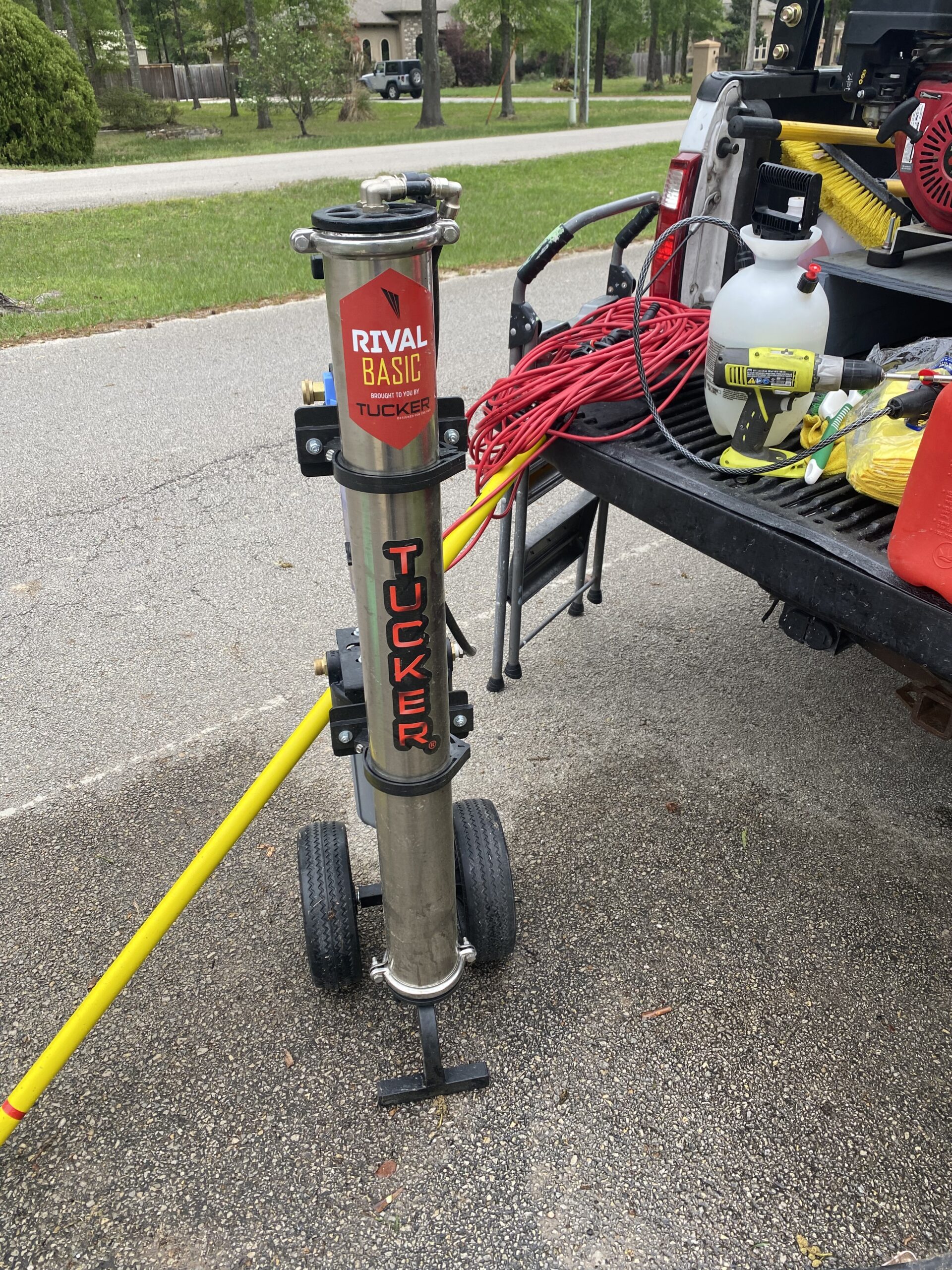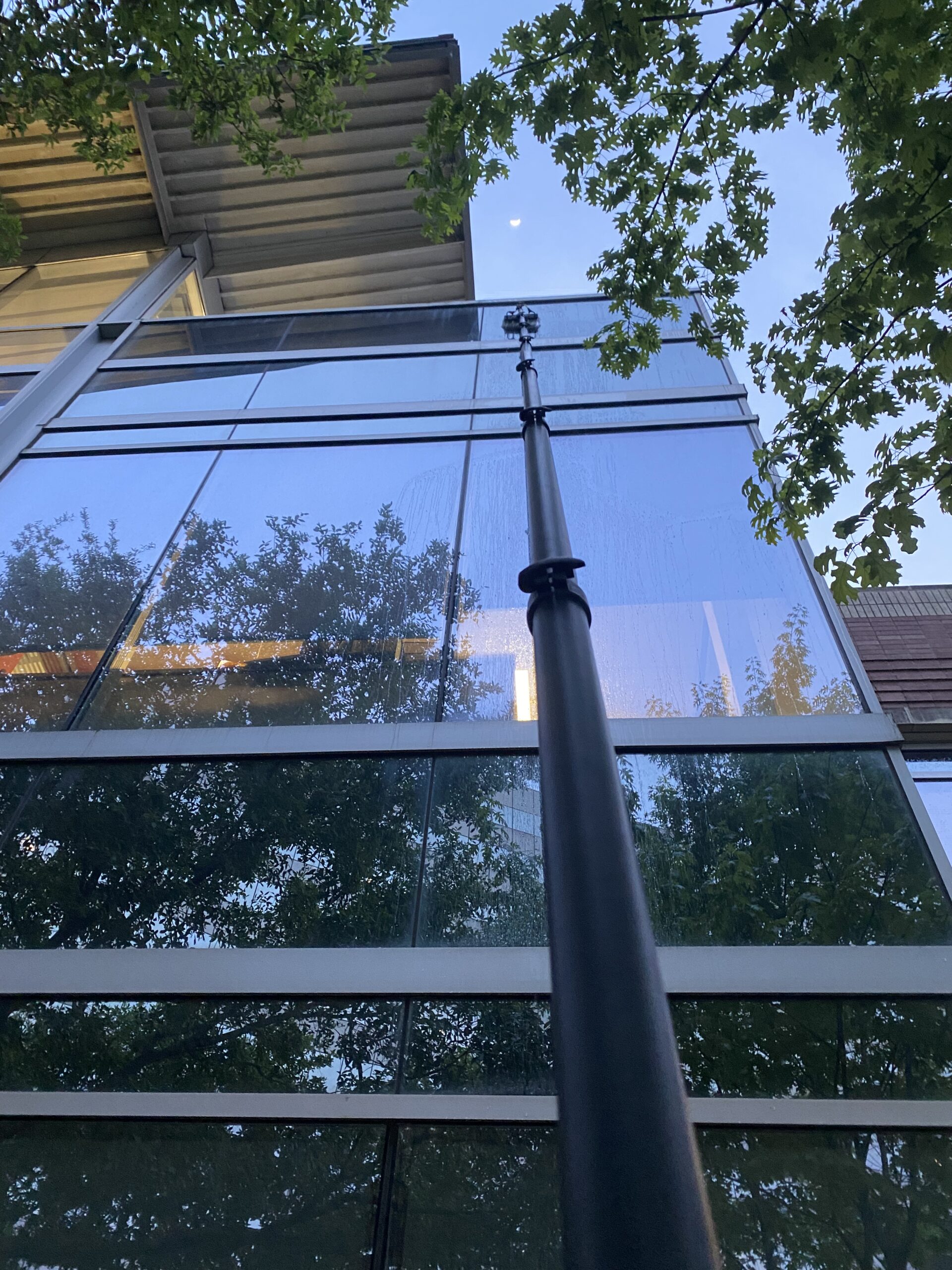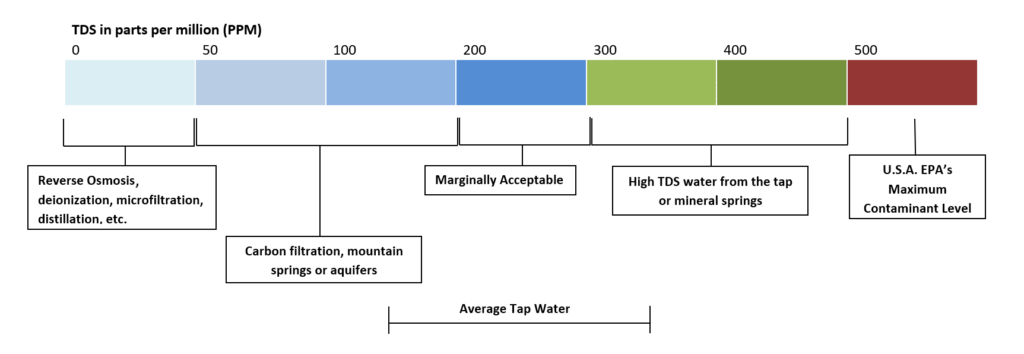A water-fed pole system is an innovative approach to window cleaning that is both safe and efficient. The system uses a long pole, often extendable and made of lightweight material like carbon fiber, which allows cleaners to reach high windows from the ground.
The pole is equipped with a brush at the top and a hose running through it. We use a combination of brushes made from boars hair and nylon, depending on what’s needed to properly clean the window. The hose is connected to our water purification system.



Water Purification
Pure water is water that has been filtered to remove minerals and other impurities. We identify the purification level by measuring the Total Dissolved Solids (TDS) in the water. Generally, these solids are primarily minerals, salts, metals, cations or anions dissolved in water.
TDS is used as an indicator of water quality and purity. A high TDS value can indicate a high concentration of dissolved ions in the water, such as calcium, potassium, chloride, nitrate, and sulfate, as well as heavy metals. While not generally considered harmful, high TDS can affect the taste of water and can indicate the presence of harmful contaminants.
The below chart from the Master Water Conditioning Corporation shows the TDS scale we use to determine water purification levels. It’s not uncommon for us to see scores between 150-250 at homes across the Greater Houston area. Our goal is to have our purified water rated at “0” when we clean your windows.

Purification Process
We connect our purification system to your outside water spigot. From there, the water flows through our system to begin the purification process.
The water purification process in a water-fed pole system typically involves a few steps:
- Sediment Filter: The water first passes through a sediment filter which removes larger particles such as sand, rust, and dirt.
- Carbon Filter: The water then moves through a carbon filter which removes smaller impurities, including chlorine and other chemicals that are commonly found in tap water.
- Reverse Osmosis: In this stage, water is forced through a semi-permeable membrane in a process called reverse osmosis. This membrane allows water molecules to pass through but blocks most dissolved salts, bacteria, and other impurities.
- Deionization: Finally, the water goes through a deionization process. Here, ion-exchange resins remove any remaining ions (charged particles), such as minerals, from the water. This final step ensures the water is entirely pure.
Cleaning with the Brush
When the water is pumped up the pole, it reaches the brush, where it is sprayed onto the window. The brush is used to agitate and lift dirt from the window surface. The beauty of using pure water is that it leaves no residue or water spots behind when it dries, resulting in a spotless, streak-free window.
Why we use a water-fed pole system for exterior windows
By using a water-fed pole system, Kinton Pressure Washing and Cleaning can efficiently and safely clean your windows, even those hard-to-reach ones, without the need for ladders or other more risky equipment.
